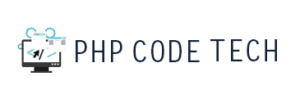Introduction
India’s Ayushman Bharat Digital Mission (ABDM) is transforming healthcare by creating a standardized, interoperable, and secure digital health ecosystem. A key part of this transformation is ensuring that clinical data is captured and exchanged in a standardized format.
This is where SNOMED CT and LOINC come in — two international healthcare terminologies that power interoperability, structured data exchange, and accurate record-sharing in the ABDM ecosystem.
What is SNOMED CT?
SNOMED CT (Systematized Nomenclature of Medicine — Clinical Terms) is the world’s most comprehensive clinical terminology.
- It provides a standard language for recording symptoms, diagnoses, and clinical conditions.
- Example: Instead of writing “Heart Attack” or “MI” or “Cardiac Arrest” differently, SNOMED CT gives a unique code that represents the condition consistently.
- This ensures that whether a patient is treated in Delhi, Mumbai, or Bengaluru, their health data remains understood across systems and providers.
Why ABDM Uses SNOMED CT:
- Removes ambiguity in clinical terms.
- Helps in better decision-making for doctors.
- Supports analytics, AI, and public health insights.
What is LOINC?
LOINC (Logical Observation Identifiers Names and Codes) is a universal standard for lab tests, clinical measurements, and observations.
- It assigns codes to lab results, medical tests, and clinical observations.
- Example: A “Blood Glucose Test” may be reported differently across labs, but LOINC provides a universal identifier, ensuring consistency in reporting.
Why ABDM Uses LOINC:
- Enables labs, hospitals, and clinics to share reports in a common language.
- Improves data accuracy and patient record portability.
- Essential for Digital Health Record (DHR) sharing in ABDM.
How SNOMED CT & LOINC Work Together in ABDM
When a patient’s health record is digitized:
- Diagnoses & conditions → mapped to SNOMED CT codes.
- Lab results & tests → mapped to LOINC codes.
- These codes are then combined into an FHIR (Fast Healthcare Interoperability Resources) bundle.
- The FHIR bundle is encrypted using FEDLIS CLI before being transmitted securely via ABDM’s Health Information Exchange.
This ensures that clinical data is standardized, interoperable, and secure.
Example in Action
- Patient diagnosed with Diabetes Mellitus → SNOMED CT Code:
44054006. - Lab Test: HbA1c Test → LOINC Code:
4548-4. - Together, they form part of the patient’s FHIR bundle, encrypted and shared across ABDM.
Why It Matters
✅ Ensures data consistency across hospitals, labs, and clinics.
✅ Reduces errors from duplicate or ambiguous medical terms.
✅ Lays the foundation for AI-driven health analytics.
✅ Critical for India’s vision of Universal Digital Health Coverage.
Conclusion
SNOMED CT and LOINC are the backbone of ABDM’s digital health revolution. They ensure that India’s health data is structured, interoperable, and globally aligned with international healthcare standards.
At NXS Techies, we specialize in helping healthcare providers, startups, and tech companies integrate SNOMED CT, LOINC, and ABDM compliance into their digital health solutions.
👉 Want to implement ABDM-compliant systems? Reach out at info@nxstechies.com or visit nxstechies.com.

